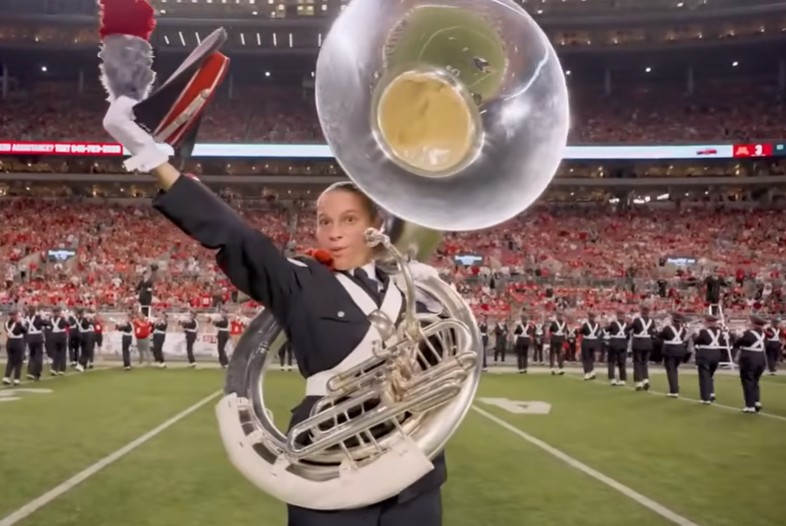
Ohio State athletic director Ross Bjork recently joined Morning Juice on 97.1 The Fan to discuss a wide range of topics impacting the Buckeyes and the broader landscape of college athletics. From coaching stability and College Football Playoff expansion to revenue streams and NCAA governance, Bjork provided key insights into Ohio State’s evolving strategy in an increasingly complex environment.
Coaching Continuity and Program Stability
In a time when coaching changes have become more frequent and complex, Bjork reaffirmed Ohio State’s commitment to head football coach Ryan Day. Despite the Buckeyes falling short in their final regular-season game, Bjork emphasized the importance of consistency.
“The complexities of the timeline are way different now,” Bjork explained. “You used to be able to hire a coach in late February or March, but now with early signing periods, the transfer portal, and NIL, it’s much more difficult. If you have continuity and it’s run the right way, stick with it.”
Bjork acknowledged the disappointment following Ohio State’s last loss but stressed the long-term benefits of stability. “We didn’t like losing that game. No one did. But we went on a magical run, and we believe in Coach Day.”
College Football Playoff Expansion: A Necessary Adjustment
One of the biggest changes in college football is the expansion of the College Football Playoff (CFP). Bjork supports the move but believes adjustments are needed to ensure fairness.
“Definitely, expansion helped us,” he said. “In years past, if you were 10-2, you were probably out. Some of the best Buckeye teams just had one late-season slip-up and missed out. Now, we’re seeing more teams in the mix, which keeps the conversation going longer and generates more excitement.”
However, Bjork took issue with the current seeding system, arguing that playoff rankings should more accurately reflect a team’s strength rather than conference championship status.
“We just need to seed it based on how teams are ranked. If we want to honor conference champions, that’s fine, but we need to rank them accordingly,” he stated. “Otherwise, we’re creating false matchups that don’t necessarily reflect true competitive balance.”
He also suggested that further expansion to 14 or even 16 teams could be on the horizon, though logistical challenges remain.
Adjusting the College Football Calendar
Bjork highlighted the need for better scheduling consistency, particularly in relation to the playoff and its overlap with the NFL calendar.
“We need to move the season up a week,” Bjork said. “There’s no reason some years we start on August 30th and others on September 5th. We need consistency and two bye weeks built into the season.”
Additionally, he proposed an “OTA model” for spring football, similar to the NFL’s offseason training activities. This, he believes, would improve player development without interfering with academics.

Revenue Implications of Ohio State’s Success
Ohio State’s deep playoff runs and national prominence may seem like an automatic financial boon, but Bjork explained that revenue distribution within the Big Ten means that success benefits the entire conference rather than just the Buckeyes.
“Everyone thinks you win all these games and money just pours into the program, but it’s not that simple,” he noted. “Our renewal rate for football season tickets is over 90%, and there’s definitely a trailing effect from our success.”
Beyond ticket sales, increased merchandise revenue and donor contributions also play a key role in Ohio State’s financial outlook.
The Future of NCAA Governance and NIL Enforcement
The NCAA is currently undergoing significant restructuring, and Bjork is at the forefront of discussions regarding a new governing body that will oversee revenue sharing, NIL enforcement, and competitive balance.
“There’s going to be a new entity that will govern revenue share caps, NIL regulations, and enforcement,” Bjork explained. “If you violate these rules, there will be clear penalties.”
The challenge, according to Bjork, is ensuring compliance across all programs.
“We all want governance and enforcement—until it happens to us,” he said. “There needs to be agreement upfront. If we sign on, we have to follow the rules. We can’t have programs running to court every time they disagree with a ruling.”

Ohio State’s Expanding Brand and Community Engagement
Reflecting on his time in Columbus, Bjork was struck by Ohio State’s unique blend of national reach and strong local ties.
“I thought Ohio State was so big that it would be difficult to make it feel like a small town, but relationships matter here,” he said. “Until you’re in it, you don’t fully understand the scale and magnitude of our fan base. But there’s still more we can do—whether it’s through data, revenue, or engagement. The upside is exciting.”
What’s Next for Ohio State?
As Ohio State continues to adapt to the shifting landscape of college athletics, Bjork’s leadership is focused on maintaining coaching stability, refining the playoff structure, and ensuring financial sustainability. With crucial decisions looming on NCAA governance and scheduling reforms, Ohio State remains positioned as a leader in shaping the future of college football.











